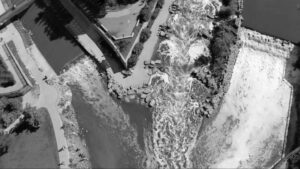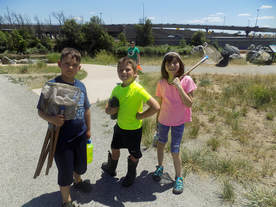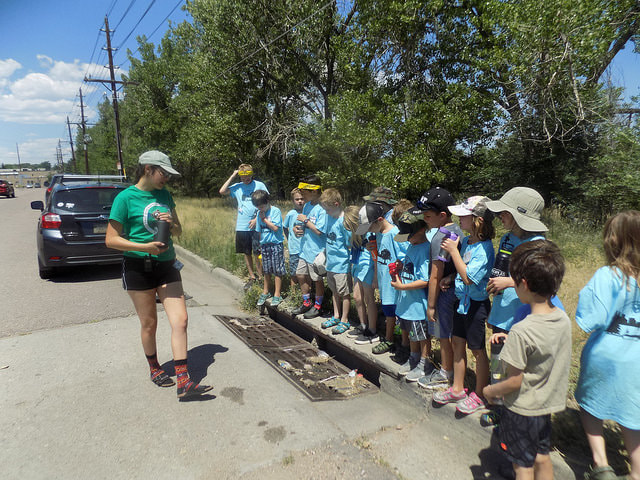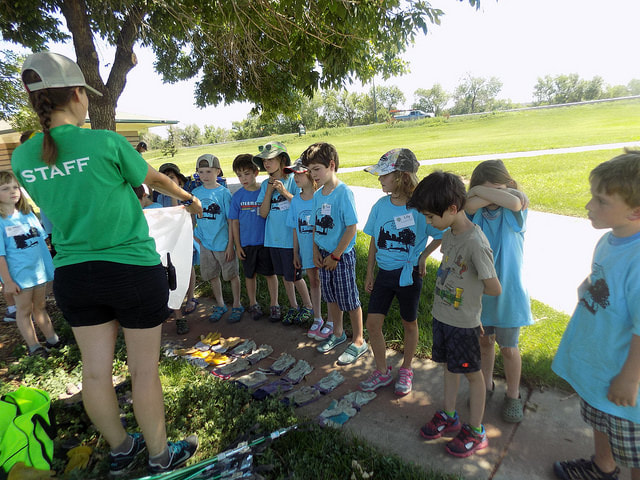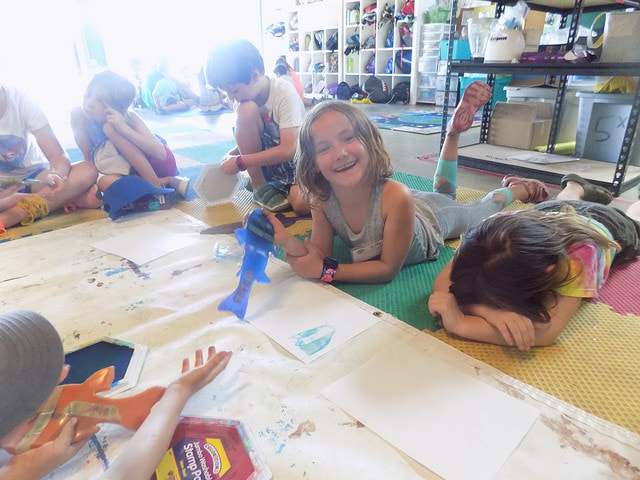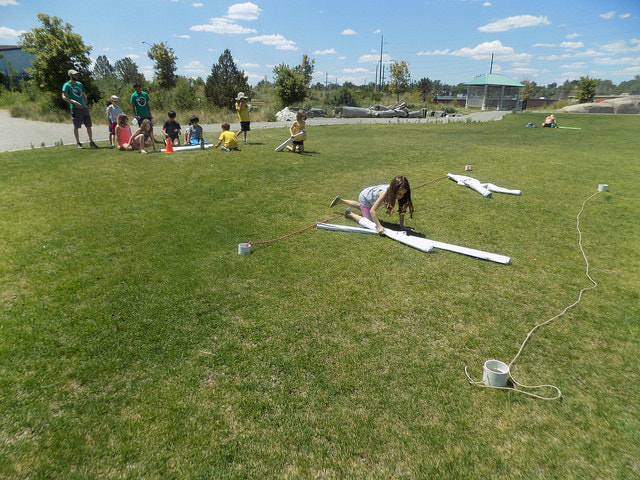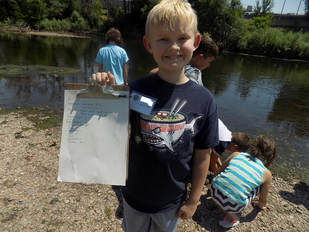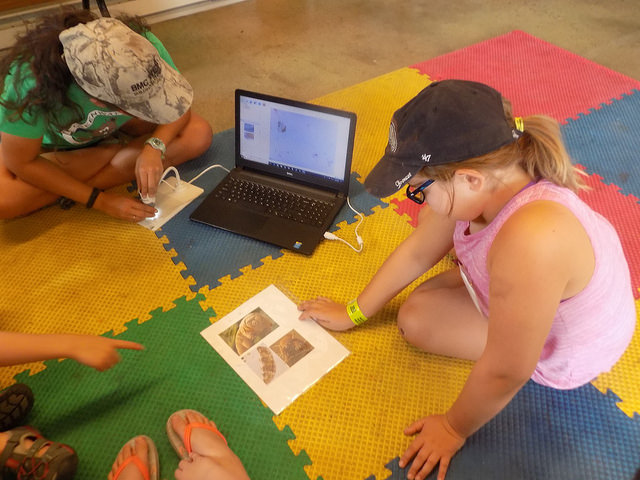The last week of June took campers on a journey- a journey of the South Platte River!
On Monday, campers started in the mountains, learning about where and how the South Platte begins. We made our own mini mountain models and discovered how snow melt forms into creeks, streams, and eventually rivers. And, we learned about how Colorado is the headwaters state, and that all of the water in Colorado flows out into other states.
We built miniature watershed models demonstrating how water gets to Denver through the transmountain diversion and how it is then distributed and used throughout the city.
On Tuesday, the focus was on how people in Colorado use and utilize the river as a resource. We played games about irrigation, explored native and non-native plants, dug miniature reserviors, and built our own model water-treatment plants.
On Monday, campers started in the mountains, learning about where and how the South Platte begins. We made our own mini mountain models and discovered how snow melt forms into creeks, streams, and eventually rivers. And, we learned about how Colorado is the headwaters state, and that all of the water in Colorado flows out into other states.
We built miniature watershed models demonstrating how water gets to Denver through the transmountain diversion and how it is then distributed and used throughout the city.
On Tuesday, the focus was on how people in Colorado use and utilize the river as a resource. We played games about irrigation, explored native and non-native plants, dug miniature reserviors, and built our own model water-treatment plants.
Field Day was on Wednesday! We explored a new nearby park and learned about our local waterways with a hands-on activities. First, we investigated the storm drains that were nearby camp. These inlets and outfalls are where rainwater and snowmelt drain away from streets and sidewalks so that the city doesn’t flood. Campers learned that this storm water goes straight from the streets to the creeks and river, with no filtering- even when the water picks up debris and trash on the way. Campers had a blast volunteering to pick up some trash in the park with grabbers and gloves to help prevent it from going into the river through the storm drain.
Thursday and Friday were dedicated to the animals of the South Platte in Denver. On Thursday, we focused on the larger, vertebrate river dwellers. Campers acted out the lives and skills of beavers, made prints with native fish, and learned about Colorado’s state fish- the Greenback Cutthroat Trout.
On Friday we zoomed in ever further on the South Platte. We caught, looked at, and learned about macroinvertebrates such as crawdads, clams, and dragonfly nymphs. Then, we got to look at some microscopic life, too! We used microscopes to look at and learn about some of the tiniest critters and particles that are in the river water. We especially liked learning about tardigrades, or water bears. They are tiny, near indestructible microscopic creatures that have many cool adaptations that allow them to survive in a wide variety of environments- even space!
Next, we did some scientific tests to give the river a “check up.” We tested the dissolved oxygen levels, pH, turbidity (clarity of the water), and took its temperature. With these test results, combined with the pollution intolerant critters we found, we were able to determine that the River is pretty healthy!
After a week of learning about the South Platte’s journey, the expert campers had a graduation ceremony!
Next, we did some scientific tests to give the river a “check up.” We tested the dissolved oxygen levels, pH, turbidity (clarity of the water), and took its temperature. With these test results, combined with the pollution intolerant critters we found, we were able to determine that the River is pretty healthy!
After a week of learning about the South Platte’s journey, the expert campers had a graduation ceremony!

